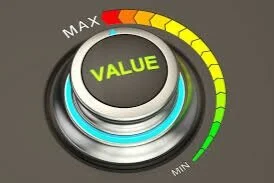Building Financial Independence – Find The Real Value of Your Business
Over time, I have found that the most effective way to describe the exit goal-setting process to construction owners is to separate exit goals into three categories.
Foundational: What must you attain before exiting or leaving your business?
Universal: What do you (and almost all business owners) want to achieve upon exiting?
Aspirational: What aspirations do you have for yourself and your business, as and after you exit?
In this blog, I want to focus on one goal—the foundational goal – one that must be attained if an owner is to exit successfully: financial independence. Company value can be a big part of your exit planning process.
The #1 Foundational Goal: Financial Independence
The acid test for every exit plan—regardless of which exit path an owner chooses—is financial independence for the owner no later than the date on which the owner transfers control of his or her company. Only owners who achieve financial independence when they leave their companies can be said to have successfully exited their businesses.
To highlight the absolute importance of financial independence, owners should review and answer the following 3 questions:
Are you willing to exit the business and transfer ownership and control without assurance of financial independence? (If the owner's answer is that financial independence is a mandatory requirement to exiting the business, then having it is not just a goal: It is a requirement of exiting.)
What amount of annual income do you need post-exit?
Is it equally critical that your family receive this level of income if you die before your planned exit date?
Financial Needs vs. Financial Wishes
A sound exit plan distinguishes between how much money (as expressed as an annual income amount) the owner needs upon exiting and how much income the owner wishes or wants. Financial need is a prerequisite of a successful exit.
Be Realistic
Research shows that retirees continue to spend 70–85% of their pre-retirement spending, and some experts recommend that boomers aim "for a 100 percent replacement rate instead." These experts point to the costly activities that boomers are undertaking during retirement and the cost of health care.
The experience of many exit planning advisors reflects that research. Successful owners generally do not decrease their spending, especially in the first years of retirement. In fact, they often add second homes, world travel, and new business start-ups to their existing expenses. The cost of health care is impossible to foresee but not impossible to anticipate and plan for how long the owner and spouse might live. As we age, it is fair to anticipate that health care and related expenses will continue to rise.
Determining Need
Most business owners do not have the capability to determine their lifetime financial independence needs, and many exit advisors do not have the training or experience to help owners determine their financial independence needs accurately or realistically. The solution, however, is simple - smart business owners to engage an experienced financial planner to assist them with this process.
A qualified financial planner can ascertain:
The owner's financial independence needs
The likely income of the owner's non-business investments (projected to exist at the owner's exit date) can generate
The rate at which the owner will use investment assets post-exit.
A Preliminary Valuation of The Company
Regarding this foundational goal of financial independence, the key element of any successful exit plan is to know what your company is worth. To accomplish this, you should gain some valuation assistance to give you a good idea of your company’s true value.
Question - would you put your home on the market without knowing its value? Your business is likely more valuable, and the conversion of that value into cash is far more important to your financial future. For all these reasons, then, determining a reliable market value is essential before planning your exit can truly begin.
Any exit planning process should be owner-based. Its foundation is your goals—one of which is how much money you want when you leave your company. From a valuation perspective, you need to know:
Whether your company is a dependable, high-performance road warrior
Or a temperamental vehicle prone to periodic breakdowns
If it is the latter, incorporate that knowledge into your exit planning process. Part of the necessary planning includes maximizing appropriate company value drivers and minimizing or eliminating any weaknesses, making your company more desirable to buyers – and thus more valuable.
Common business value drivers include the following:
Business systems that improve the sustainability of cash flows
A stable, motivated management team
A solid, diversified customer base
Stable and increasing cash flow
A realistic growth strategy
Effective financial controls
Preliminary valuations are also important in designing incentive plans for key employees. Effective compensation plans and “stay-bonuses” are all designed to motivate employees to increase your company's value. All are based on the valuation of your company. Once you determine current value, these plans can motivate employees to increase that value and be rewarded for increasing company profitability.
Add to these great reasons for securing an initial company valuation are the inherent dangers of failing to do so. Imagine that, after spending many months (or longer) planning your exit, you learn that the value of your company will not support your exit—either on your timetable or for the amount of cash you wanted. That is an unacceptable outcome!
Obtain an Initial Company Valuation:
To obtain your initial free valuation, contact me at david@remodelforce.com. Due to some competent business valuation software, I can help you determine your business's present-value range. The true value of this is that this initial valuation is a living document. As you add appropriate value drivers like stable and increasing cash flow and realistic growth strategies, you can begin to project how those activities will increase your company valuation. This may significantly help bridge an existing asset gap that may be needed for your planned exit.
This conversation is at the core of any successful business exit and transfer. To learn more about this process, please contact me at david@remodelforce.com or visit my website to learn more.


